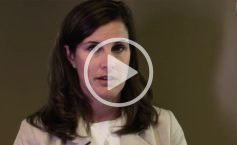To those on the outside, the rolling process is an unknown. The average person may be completely unaware of what rolling is, but it is something that is extremely important to know in the steel industry.
Rolling is a fabricating process in which metal is passed through a pair of rolls. Rolling has 2 main classifications. Flat rolling, in which the product is typically a sheet, or profile rolling, in which the product is typically a rod or bar. Rolling is also classified according to the recrystallization temperature of the metal.
Rolling processes date back to 1779. The first rolling mill was built in Fontley, Hampsire where Henry Cort developed and received patents for his ideas. The two types of temperature-dependent rolling processes are hot rolling and cold rolling, and they each have their own specific use.
Hot Rolling
Hot rolling uses large pieces of metal, such as slabs or steel billets, and heats them above their recrystallization temperature. The metal pieces are then deformed between rollers creating thin cross sections. These cross sections are thinner than those formed by cold rolling processes with the same number of stages. Hot rolling also reduces the average grain size of metal but maintains an equiaxed microstructure.
Cold Rolling
Cold rolling is a process which passes metal through rollers at temperatures below its recrystallization temperatures. This increases the yield strength and hardness of the metal. This is done by introducing defects into the crystal structure of the metal creating a hardened microstructure which prevents further slip. Because the metal is at room temperature, it is less malleable than metal above its recrystallization temperature. This makes cold rolling a more labor intensive and expensive process than hot rolling. Cold rolling can also reduce the grain size of the metal resulting in Hall-Petch Hardening.
Both hot rolling and cold rolling are used to create sheet metal. However, cold rolling produces thinner sheets. Hot rolling is also commonly used to create railroad rails, and cold rolling is often used to make beverage cans.
This was only a caveat of rolling info highlighting two very important rolling processes – hot and cold. For any questions, feel free to contact us




